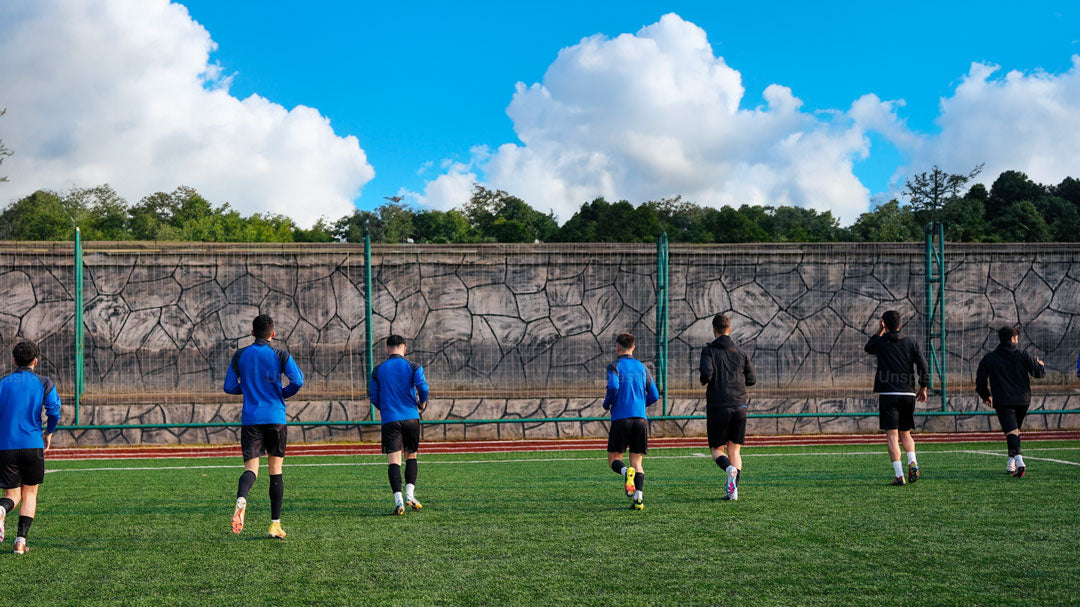Introduction to fundamental movement development: Understanding the basics
Fundamental movement development is the cornerstone of physical growth and motor skill acquisition in children and adolescents. It encompasses the coordination of movement, both simple and complex, and is a key aspect of human development. In this article, we explore the significance of this phase, which spans from primary to teenager stages, and how innovations like A-Champs' ROX's reaction lights can support this crucial period.
Early movement skills: The five key gait forms for young children
From 6 to 14 years, children typically master five gait forms—walking, running, galloping, hopping, and skipping—that are instrumental for upright locomotion. These forms are not just motions but represent milestones in a child's developmental journey, with most 4-year-olds able to perform these skills, with occasional challenges in skipping.
The interconnection of movement skills: How different skills relate and progress
While mastering one movement skill does not necessarily mean mastery of another, the skills are interconnected. The development of balance and bilateral coordination underpins the progression of these skills, illustrating the complexity and interdependence of movement development.
From general to specialized: The evolution of movement
According to Bailey and Macfadyen (2000), movement in children evolves from general patterns to increasingly specialized actions. This progression is key to developing specific and refined movements required for athletic skills.
Laying the goundations: Ages 2 to 7
Between the critical ages of 2 and 7, children establish the basic skills of stability, locomotion, and manipulation, which are essential for future complex abilities, including those needed for sports.
The window of opportunity: Ages 8 to 14 and athletic potential
The age band of 8 to 14 years is often viewed as the golden window for laying down the groundwork for future athletic excellence. This phase is pivotal for introducing fundamental motor skill training to unlock each individual's potential.
Individual development timelines: Recognizing unique growth patterns
Every child develops at their own pace, and fundamental movement skills are no exception. Recognizing that development is not linear but unique to each individual is key to nurturing growth without imposing unrealistic expectations.
Fundamental skills overview: Stability, locomotion, and manipulation
The range of fundamental skills, categorized under stability, locomotion, and manipulation, form the core of a child's physical development. Each category encompasses skills that contribute to a child's ability to move with confidence and grace.
|
STABILITY |
|
LOCOMOTION |
|
MANIPULATION |
|
Balancing Bending Stretching Twisting Turning Swinging Inverted supports Body rolling Landing/Stopping Dodging |
|
Walking Running Jumping Hopping Skipping Galloping Sliding Leaping Climbing |
|
Throwing Catching Kicking Trapping Striking Volleying Bouncing Ball rolling Punting
|
Cognitive and motor development: Advanced training methodologies
Recent advances in training methodologies have added depth to the understanding of cognitive motor development. These methodologies provide structured support during a young person's crucial development period.
At A-Champs, where we engineered and developed ROX's reaction lights, we present our training methodology below. This methodology integrates perfectly with the science of fundamental movement

Why fundamental movement development is essential
Developing fundamental movement is crucial for promoting overall health, physical activity, physical fitness, and mental awareness. It also plays a significant role in countering inactivity and obesity, enhancing motivation, and boosting movement confidence.
|
HEALTH – RELATED
|
|
PERFORMANCE - RELATED |
|
Cardio-vascular endurance Muscular strength Muscular endurance Flexibility Body Composition Improved range of movement Vision |
|
Eye hand foot coordination Balance Speed Agility Power (strength x speed) Acceleration Multi directional movement Perception |
The consequences of inactivity: Obesity and its impact on children
Inactivity and obesity are growing concerns that have dire consequences for children's health. This section discusses the alarming trends and the importance of movement in combating these issues.
Supporting evidence: The benefits of physical activity
Regular physical activity has numerous benefits, including disease prevention, body weight regulation, bone growth, and muscle tissue integrity. It also contributes to higher academic achievements, mental well-being, and self-esteem.
Addressing Learning Difficulties Through Movement
Research indicates a link between specific learning difficulties, such as dyslexia and ADHD, and motor skill deficits. Structured movement programs are a practical response to these challenges.
Combatting health and inactivity challenges
With obesity rates soaring in the UK, Europe, and America, it's more important than ever to integrate fundamental movement programs into the lives of young individuals. Such initiatives can reverse troubling trends and promote a healthier, more active generation.
ROX's reaction light training: Integrating technology with movement development
Incorporating technology, such as ROX's reaction lights, into movement development can enhance the training experience. This section examines how such technology can be used effectively in physical education.
Below demonstrates the impact of quality fundamental movement program on a child’s handwriting over a sort of period.

And this is a second handwriting 5 months after a movement intervention.

The health and fitness components: Understanding health and performance-related fitness
A child's fitness comprises both health-related and performance-related components. Recognizing these components helps in designing





Leave a comment
This site is protected by reCAPTCHA and the Google Privacy Policy and Terms of Service apply.